![]()
![]()
![]()
Use LEFT and RIGHT arrow keys to navigate between flashcards;
Use UP and DOWN arrow keys to flip the card;
H to show hint;
A reads text to speech;
58 Cards in this Set
- Front
- Back
|
What is anatomy? |
Anatomy is the study of body structures and their relationships |
|
|
*What is physiology? |
Physiology is the science of how body parts function |
|
|
*How does physiology relate to anatomy? |
Physiology depends on the structure capability and limitations of the body part’s anatomy. (i.e the function of the body part, depends on the structure) (i.e. physiology depends on anatomy) |
|
|
What are the major subdivisions of macroscopic anatomy? |
Regional and Systematic
“Gross” or “macroscopic” anatomy is the study of large, visible body structures.
|
|
|
*What are the major subdivisions of microscopic anatomy |
“Microscopic” anatomy is the study of structures at the cellular level, that are not visible without a microscope. 1. Cytology, Histology, and Developmental Anatomy
Microscopic anatomy can be divided into: Cytology - study of cells Histology - study of tissues Developmental Anatomy anatomy is the study of structural changes throughout the lifespan For example Embryology studies development of the fetus (before birth) |
|
|
What is one subdivision of developmental anatomy? |
Developmental Anatomy anatomy is the study of structural changes throughout the lifespan For example Embryology studies development of the fetus (before birth) |
|
|
What are the major subdivisions of physiology? |
The two major subdivisions of Physiology are:
One subdivision of physiology studies the functions of specific organs such as kidneys - renal physiology 2. Another physiology subdivision studies the functions of organ systems, such as the cardiovascular system (heart & blood vessels) |
|
|
What disciplines does physiology use to describe the function of body parts |
Physiology uses chemistry, biochemistry and physics to describe the functions of body parts |
|
|
How does the “Complementarity of Structure and Function” relate to Anatomy & Physiology? |
Why must Anatomy and Physiology be studied together? Because there is a complementariy of structure (Anatomy) and Function (physiology)
This means that the function (Physiology) of body parts depends on their structure (Anatomy)
|
|
|
List the 6 Levels of Structural Organization of the Body, in order from simplest to most complex |
1.Chemical - atoms and molecules 2. Cellular - cells & organelles 3. Tissue - collection of similar cell types 4. Organ - made up of different types of tissues, and achieve one or more functions 5. Organ System - group of organs working together to achieve common function 6. Organismal - YOU, the entire human |
|
|
*List the 11 organ systems of the body & List the major structures and organs of each system & List the major function (s) of each organ system |
1. Integumentary sytem - skin, hair & nails form external body covering that protects deeper tissues from injury (e.g. skin has sweat and oil glands)
2.Skeletal System - skeleton protects and supports body organs & forms the framework for muscles (Blood cells are formed in the bones, and bones store minerals) (a joint is a site where two or more bones meet)
3. Muscular System - muscles cause mechanical motion in order to manipulate objects or the environment. Muscles make possible the locomotion of humans through the environment, facial expressions and posture. Muscles also produce heat.
4. Nervous System - includes brain, spinal cord and nerves. Forms a fast acting control system that responds to external and internal stimuli (pin prick, low blood sugar). Nervous system responds by activating muscles and glands
5.Endocrine System - includes glands that secrete hormones to regular growth, reproduction and metabolism by the body
6. Cardiovascular System - Heart pumps blood through Blood Vessels. Blood carries oxygen, carbon dioxide, nutrients and wastes throughout the body
7. Lymphatic System - picks up fluid leaked from blood vessels and returns it to the blood; disposes of debris in the lymphatic stream; helps generate the immune response. Lymphatic system contains white blood cells, called lymphocytes, that are involved in the immune response. The immune response mounts an attack against foreign substances in the body.
8. Respiratory System - keeps blood constantly supplied with oxygen and removes carbon dioxide. The respiratory gaseous exchange occurs through the walls of air sacs in the lungs.
9. Digestive System - breaks down food into absorbable units that enter to blood for distribution to cells. Indigestible foodstuffs are eliminated as feces.
10. Urinary System - eliminates nitrogenous wastes. Urinary system regulates water, electrolyte and acid base balance of the blood.
11. Male & Female Reproductive Systems - overall function is to produce offpsring. Male testes produce sperm and male sex hormone. Male ducts and glands aid in delivery of sperm to female reproductive tract. Female reproductive structures are sites for fertilization and development of the fetus. Ovaries produce eggs and female sex hormones. Mammary glands of female breasts produce milk to nourish the newborn baby. |
|
|
*What does the lymphatic organ system do? |
Lymphatic System - picks up fluid leaked from blood vessels and returns it to the blood; disposes of debris in the lymphatic stream; helps generate the immune response. Lymphatic system contains white blood cells, called lymphocytes, that are involved in the immune response. The immune response mounts an attack against foreign substances in the body. |
|
|
List the 8 functional activities that are necessary to maintain life & Describe an example of each of these functional activities |
1. Maintain Boundaries - between internal and external environments. Cell membranes and skin (integumentary system) do this
2. Movement (contractility) - of body parts Skeletal Muscles move the skeleton and body of substances Smooth gastrointestinal muscles move digested food.Cardiac Muscles move blood.
3. Responsiveness - The ability to sense and respond to stimuli
Withdraw hand (reflex) from flame. Diaphram increases breathing rate (autonomic & not under conscious control) when you are running. Walk towards destination (voluntary)
4. Digestion - breakdown of ingested foodstuffs in mouth, stomach and gastrointestinal tract
Absorption of simple molecules through the small intestine into blood.
5. Metabolism - is all chemical reactions that occur in body cells, including:
Catabolism - breaks down substances into simpler building blocks Anabolism - builds complex structures from simpler substances Cellular Respiration - cells use nutrients and oxygen to produce ATP, the energy rich molecules powering cellular activities. Metabolism depends on the digestive, cardiovascular and respiratory systems…
6.Excretion - The removal of wastes from metabolism and digestion by respiratory, urinary, and digestive systems. e.g. carbon dioxide, urea (i.e. urine), and feces
7. Reproduction - cellular division for growth or repair of body organs (e.g. Producing offspring (babies) by the reproductive system)
8. Growth - increase in size of a body part of organism |
|
|
List the 5 survival needs |
Nutrients Oxygen Water Normal Body Temperature Appropriate atmospheric pressure All should be present in appropriate amounts |
|
|
*List three major features of Homeostasis |
Homeostatis is the body’s ability to maintain a relatively stable internal environment. Even while the outside world changes continuously.
1. structural: the animal or plant has particular physical features which help its survival in an otherwise hostile environment. 2. functional: the metabolism of the animal or plant is able to adjust to changes in conditions as they are detected. (The focus of this Area of Study). 3. behavioral: the actions and interactions of the individual, either alone or with others, help it to survive in its particular environment. |
|
|
*What is homeostatis? |
Homeostatis is a dynamic state of _equilibrium__, or _balance_. Which means the body can change its internal conditions in response to a _stimulus_ - the balance can shift. But these changes can be made only within _certain narrow limits__. In general, the body is in a state of Homeostatis, when the body’s needs are __adequately met__ and it is _functioning smoothly__. |
|
|
*What are the two major body systems responsible communications to maintain Homeostasis? |
nervous system and endocrine system
The two major body systems responsible for communications to maintain homeostatis are: 1. nervous system and 2. endocrine system Electrical pules (nervous system) or hormones (endocrine system) are the agents of communication and control...through which different sites of the body communicate to mainain Homeostatic balance |
|
|
In the homeostatic control system, what is the stimulus? |
stimulus - is a change in a variable (such as temperature). A stimulus may disturb the homeostatic balance, or it may provide information about the internal or external environment |
|
|
In the homeostatic control system, what is the receptor? |
receptor - detects a stimulus and generates information about the variable. Receptors are specialized cells that can be found in the skin (sending pressure, temperature, pain), sensory organs (eyes, ears), and many other locations (e.g. receptors in blood vessels detecting blood pressure or blood chemicals |
|
|
*In the homeostatic control system, what is the input? |
input - the receptors input information travels to the bodys control center along the Afferent (inward) pathway. |
|
|
In the homeostatic control system, what is the control center? |
control center - can be the brain, spinal cord, or endocrine gland. The control center (brain or endocrine glands) receives input information and send commands called output. Control center determines the set point for the stimulus variable and determines the appropriate response to the stimulus |
|
|
*In the homeostatic control system, what is the output? |
output - the commands sent out by the control center.set along the efferent (outward) pathway. |
|
|
*In the homeostatic control system, what is the effector? |
effector - output information travels to the effector (organ responding).The effector is the body part that makes a response to the original stimulus Effectors may use the following three: voluntary muscles (withdraw hand) involuntary muscles (pupil constriction) other body parts (nerves release neurotransmitters, endocrine glands release hormones) to generate a response. |
|
|
*In the homeostatic control system, what is the response? |
response - the response generated by the effector. |
|
|
*What is the Afferent Pathway? |
The receptors input information travels to the bodys control center along the Afferent (inward) pathway. |
|
|
*What is the efferent pathway? |
The commands sent out by the control center.set along the efferent (outward) pathway. |
|
|
*What are three possible purposes served by the Effector’s Response? |
The three possible response of an effector include:
1. protect the organism 2. facilitate life sustaining activities 3. maintain homeostatic control |
|
|
What does Homeostatic Imbalance cause in the body? |
Homeostatis is so important that most diseases can be regarded as its disturbance. This disease condition is called homeostatic imbalance. It may occur as the bodys control system becomes less efficient during aging. |
|
|
What is the purpose of a Negative Feedback Mechanism? |
Response of the negative feedback mechanism either shuts OFF the original stimulus, OR REDUCES its intensity. Negative feedback mechanism opposes the stimulus. |
|
|
Describe one example of the body generating a negative feedback mechanism. |
Shivering, or Sweat Glands activating.
|
|
|
What the negative feedback do? Name four functions regulated by a negative feedback mechanism |
Negative feedback REDUCES the effect of the original stimulus and are essential for maintaining homeostatis.
For functions that are regulated by the negative feedback mechanism, include: 1. Blood Levels of glucose & ions 2. Body Temperature 3. Heart Rate 4. Breathing Rate |
|
|
What is the purpose of a Positive Feedback Mechanism? |
Magnify the effect of the original stimulus leading to an enhanced (greater) response. AND to regulate blood clotting and labor contractions.
|
|
|
Describe one example of the body generating a positive feedback mechanism |
Blood Clotting: 1. Platelet plug forms. Feedback cycle ends when plug is formed. |
|
|
Name two functions regulated by a positive feedback mechanism |
Regulates: 1. Labor Contractions 2. Blood Clotting |
|
|
How might negative feedback and positive feedback mechanisms cause homeostatic imbalance during the process of aging? |
Can occur during Aging if Negative feedback mechanisms are overwhelmed. OR if potentially destructive positive feedback mechanisms take over.
|
|
|
What is the anatomical position?Why is the anatomical position important? |
The anatomical position is: Palms facing forward Knowing the anatomical position is important, as most directional terms refer to the body as if it were in this position.
|
|
|
What do the anatomical position terms(directional terms): superior and inferior mean? |
Superior (Cranial) - toward the head, upper part of the bod, higher than
Inferior (Caudal) - away from the head, lower part of the body lower than |
|
|
What do the anatomical position terms(directional terms): Ventral and Dorsal mean? |
Ventral (Anterior) - toward or the front of the body, in front of Dorsal (Posterior) toward or the back of the body, in back of |
|
|
What do the anatomical position terms(directional terms): medial and lateral mean? |
Medial - toward or at the midline, on the inner side of Lateral - away from the midline of the body, on the outer side of |
|
|
What do the anatomical position terms(directional terms): intermediate and proximal, and distal? |
Intermediate - between a more medial and more lateral structure Proximal - closer to the origin of the body part, or closer to the point of attachment of a limb to the body trunk Distal - further away from the origin of the body part, or farther away from the attachment of a limb to the body trunk |
|
|
What do the anatomical position terms(directional terms): Superficial and Deep mean? |
Superfical (external) - toward or at the body surface (i.e. external) Deep (internal) - away from the body surface, more internal (i.e. internal) |
|
|
What are 2 regional terms describing 2 major regions of the body? |
1. axial - head, neck, and trunk 2. appendicular - limbs Regional terms designate specific areas |
|
|
Please name the 3 MAIN body planes |
A body plane is a flat surface along which body or structures cut for anatomical study
1. Saggital Plane - divides the body vertically into right and left parts. Produces a sagittal section 1a. Midsagittal (median) plane - lies on the midline 1b. Parasagittal plane - not on midline Frontal (coronal) plane - divides body vertically into anterior and posterior parts 2. Transverse (horizontal) plane - divides the body horizontally into superior and inferior parts. Produces a cross section 3. Frontal Plane (Front half from back half)
|
|
|
Name 2 subdivisions of the dorsal body cavity and name something that is contained in each |
The dorsal cavity protects the nervous system Two subdivisions are: Cranial Cavity - encases the brain Vertebral Cavity - encases spinal cord |
|
|
Name 3 subdivisions of the ventral body cavity and name something that is contained in each |
The ventral body cavity houses internal organs (viscera) 1. Thoracic Cavity - also has two pleural cavities, which each houses a lung Mediastinum (Superior) - surrounds thoracic organs: esophagus, trachea Mediastinum (Entire) - entire mediastinum contains pericardial cavity - that encloses the Heart. 2. Abdominal Cavity - contains digestive viscera 3. Pelvic Cavity - contains urinary bladder, reproductive organs, and rectum These are both housed in the Abdominopelvic Cavity
The ventral cavity is also referred to as having TWO subdivisions (separated by the diaphram): 1.Thoracic Cavity - housing heart and lungs 2. Abdominopelvic Cavity - housing digestive viscera (abdominal) and urinary bladder (pelvic) |
|
|
What are parietal and visceral serous membranes? |
A serous membrane is a thin, double-layered membrane separated by serious fluid Parietal Serosa - lines internal body walls Visceral Serosa - covers the internal organs ; allows the organs to slide without friction.
|
|
|
What are the 4 abdominopelvic quadrants? |
These are the divisions primarily used by medical personnel.
Right Upper Quadrant (RUQ) Right Lower Quadrant (RLQ) Left Upper Quadrant (LUQ) Left Lower quadrant (LLQ) |
|
|
What are the 9 abdominopelvic regions? |
The nine divisions used primarily by anatomists
1. right hypochondriac 2. epigastric region 3. left hypochondriac 4. right lumbar region 5. umbilical region 6. left lumbar region 7. right iliac (inguinal) region 8. hypogastric region 9. left iliac (inguinal) region |
|
|
Label the Homeostatic Control System |

|
|
|
Label an example of a Homeostatic Control System responding to TWO negative stimuli |
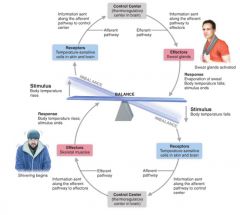
|
|
|
Label Body Regions |

|
|
|
Label the Dorsal and Ventral Body Cavities and Their Subdivisions |
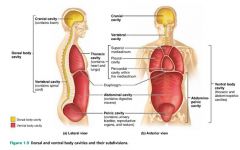
|
|
|
Label the 3 main planes, and the 3 types of sections they create |
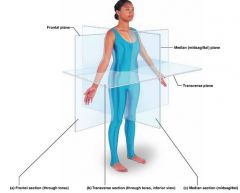
|
|

Identify the ORGANS:
|

|
|

Identify Organs:
|
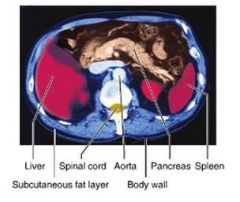
|
|
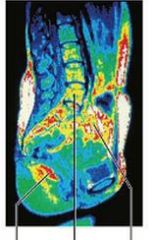
Identify Organs |
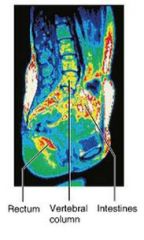
|
|
|
Identify the 9 abdominopelvic regions |

|
|
|
Identify ORGANs in the 9 abdominopelvic regions |
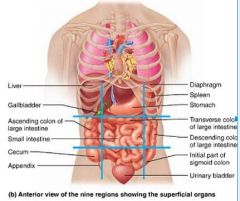
|

